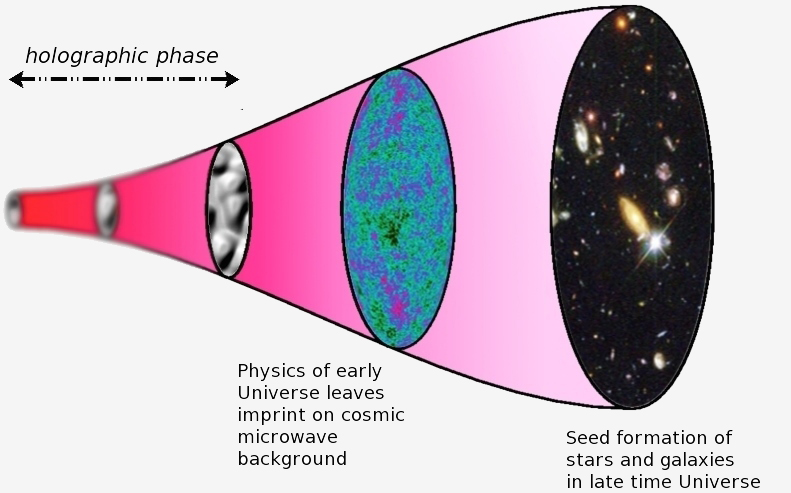Researchers from the University of Southampton in collaboration with colleagues in Canada and Italy argue in a new paper that our lives - everything we see, feel and hear as well as our perception of time - may actually be a hologram originating from a flat, two-dimensional field.
University of Southampton Mathematical Sciences Professor Kostas Skenderis said the idea is similar to that of ordinary holograms, like those found on credit cards, in which a three-dimensional image is encoded in a two-dimensional surface.
Another way of thinking about it is with a 3D film in a theater. While what you're watching in such a setting isn't a hologram, the pictures are perceived as having height, width and depth when in actuality, it all comes from a flat 2D screen. The difference in our 3D universe, they note, is that we can touch objects and the "projector" is "real" from our perspective.

Skenderis and his team took data about irregularities in the cosmic microwave background (the "afterglow" of the Big Bang) and applied it to holographic models. In doing so, the team said they found "substantial evidence" supporting a holographic explanation of the universe.
As Inverse highlights, this is a controversial subject among researchers. The publication points to a team of theoretical physicists that came to the opposite conclusion in December 2015. The idea was originally floated in the '90s.
When asked by Gizmodo if the model says we live in a hologram, Niayesh Afshordi, the study's first author from the University of Waterloo in Canada, said he would say that we don't live in a hologram but perhaps we could have come out of a hologram.
Perhaps Professor Skenderis sums it up best:
"Einstein's theory of general relativity explains almost everything large scale in the universe very well, but starts to unravel when examining its origins and mechanisms at quantum level. Scientists have been working for decades to combine Einstein's theory of gravity and quantum theory. Some believe the concept of a holographic universe has the potential to reconcile the two. I hope our research takes us another step towards this."
The results of their study are published in the journal Physical Review Letters.
Lead image via Daily Galaxy. Sketch courtesy Paul McFadden
